Remote Feng Shui is an advancement brought about by the pandemic. Having studied Bella’s floor plans with accompanying photos/videos and looked at the site on Google Earth, I am ready to conduct a remote Feng Shui appraisal for her home ‘down under’ from my office in the UK. After touring the property together online, recommendations for a happy, healthy, harmonious home can follow by email.
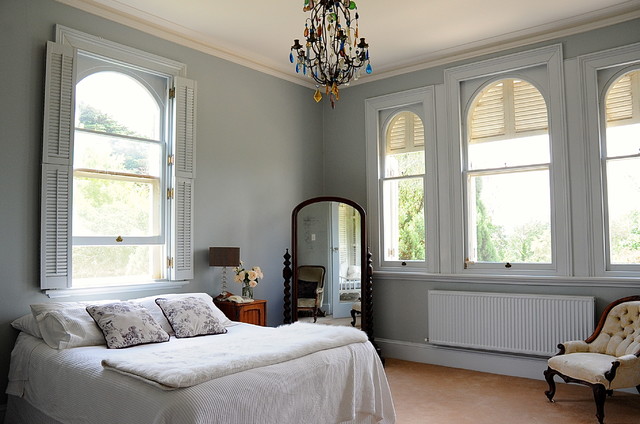
Not new to Feng Shui
My Aussie client was using Feng Shui before we met online for a remote Feng Shui consultation. Bella recently bought a beautiful home with a terraced garden in Sydney but was in a quandary about moving in. She reached out to me by email having read my blogs. Feng Shui is popular in Australia and there are many traditional Chinese practitioners there.
However, Bella’s local Chinese Feng Shui expert had expressed several misgivings about their purchase. She had turned to me for a second opinion. Bella was forthcoming and responsive to my requests for floor plans and photos. I became well-attuned to the property and in a strong position to help her with these. Plus the Estate Agent’s video, used to sell the house, came in handy.
Missing wealth corner
From the plans I could see their immediate cause of concern – a missing wealth corner. A large section of the NW corner of the home was “missing”. This a term we apply in Feng Shui to an ‘L’ shaped footprint. What’s more, according to the Bagua Map* , the area in question corresponded to the Wealth & Abundance sector of the home. Not something to be ignored or jeopardised unnecessarily when your good fortune is at stake.
Bagua map
In Feng Shui we use the Bagua as a tool to diagnose the underlying cause of problems. This informs us what ‘cures’ to employ. The Bagua is a 9-grid square composed of 8 distinct areas or ‘houses’. It is arranged around a central square – the heart of the home (the chi centre). It is commonly presented as an octagon (according to Taoist cosmology), although a square grid is often easier to work with.
Each square represents an essential component to living a good life. Other Bagua houses include Love & Marriage, Work & Career, Creativity & Children. In an ideal world we would strive to give equal attention to each house. At a minimum we should maintain a healthy balance between them all in order to get the most out of life.
When the flow of chi to a sector is compromised – through structural imbalance or poor placement of furniture – the Feng Shui practitioner advises the necessary steps to rectify this before it has a corresponding negative effect on the lives of the people living there.
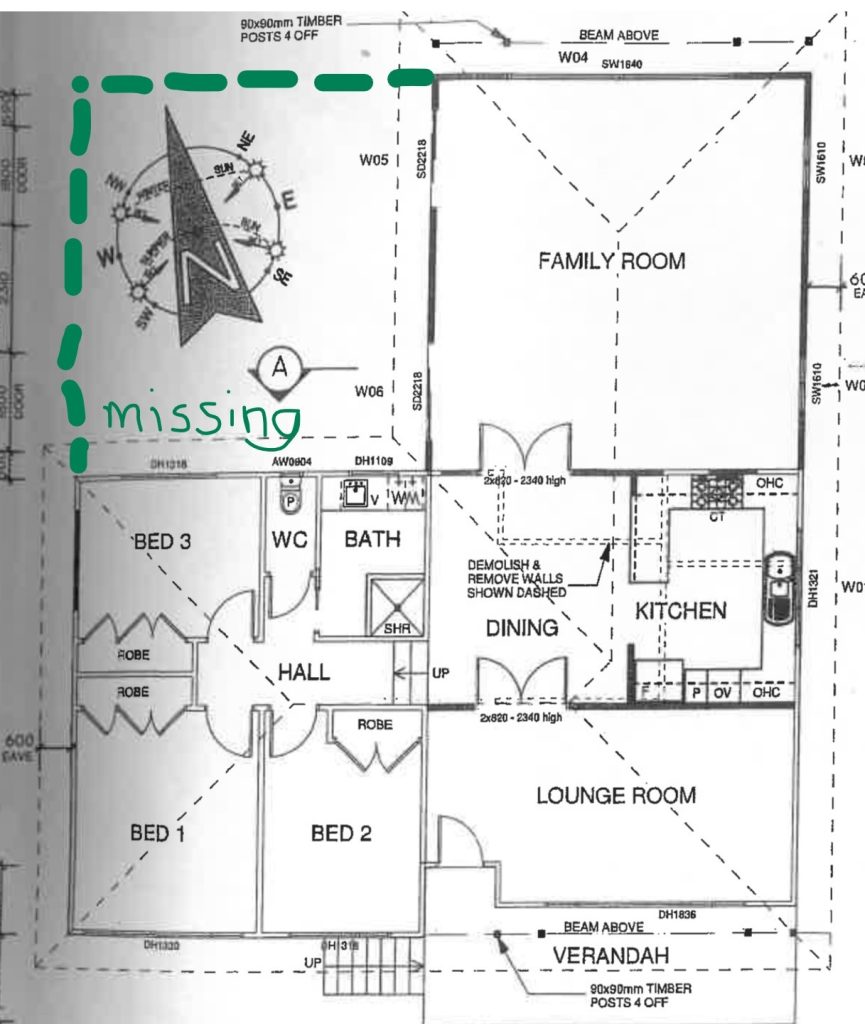
A missing corners – how do they occur?
A missing corner is often the consequence of constructing an asymmetric building. I’m not saying this should be avoided at any cost. But it is something to be aware of when commissioning building work or purchasing a home which has an ‘L’ shape. I would recommend steps to compensate for the imbalanced flow of chi that results before it impacts the inhabitant’s life further.
For instance, when an extension does not span the full width of the building, an imbalance occurs. Chi energy naturally wants to flow into the section that falls outside the footprint of the property – and has been left ‘empty’.
The Family Room on the back of the house is the cause of the missing sector in Bella’s home. This situation is not a deal-breaker or insurmountable – and easily stabilised in a house like hers, where a substantial patio occupies the missing corner outside. I was able to advise her how to correct this using existing outdoor seating and planters.
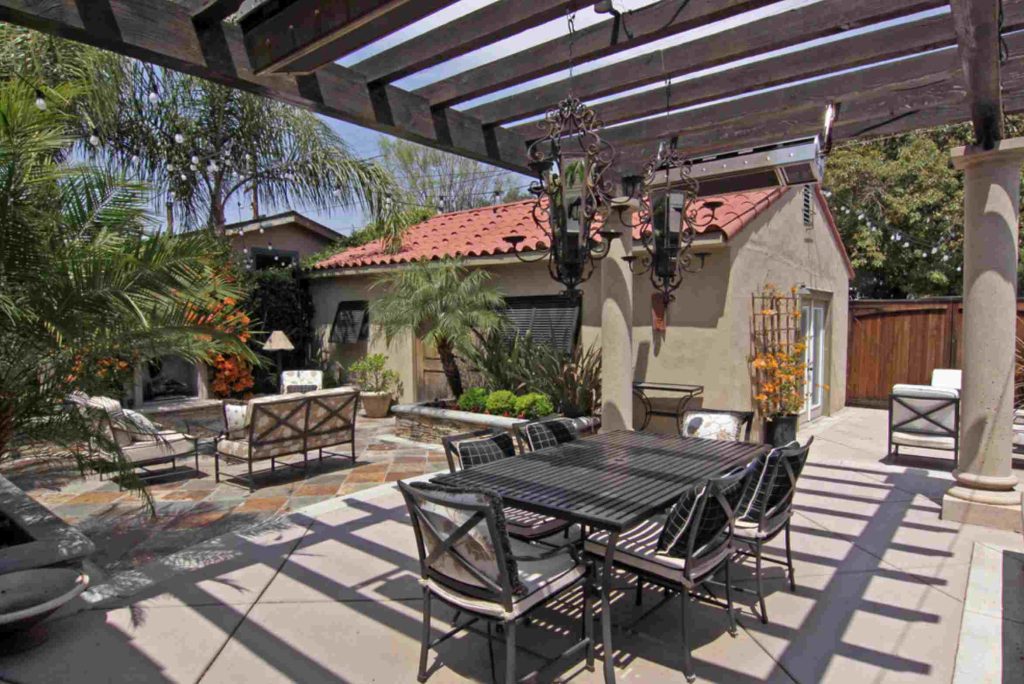
More questions from Bella
The other issues I addressed for Bella were:
“We’d like to renovate Bedroom 3 for guests to include an ensuite. But because Bedroom 3 sits in the SE area of the home we were advised not to. What do you recommendations?”
Bella’s first instinct was a good one to renovate Bedroom 3. Prescribing the room’s location based exclusively on the compass direction would conflict with other criteria for this renovation. Principally it would not give the guests – or the owners – the same degree of privacy. The fallout that might ensue could easily undermine a decision based on the compass alone, in my view. Bella had other questions on her mind.
“Is the stove a problem where it is?”
I reassured her the stove was fine where it was located. The cost and upheaval of reconfiguring the entire kitchen would outweigh any small advantage in repositioning the stove. Besides there are always ways to rectify fixtures if they are in the ‘wrong place’. We use mirrors often in Feng Shui to deflect or redirect the flow of chi energy. Overall, I believe it would be better to wait and see if the stove position (as is) has an adverse effect on their lives before incurring expense in moving it.
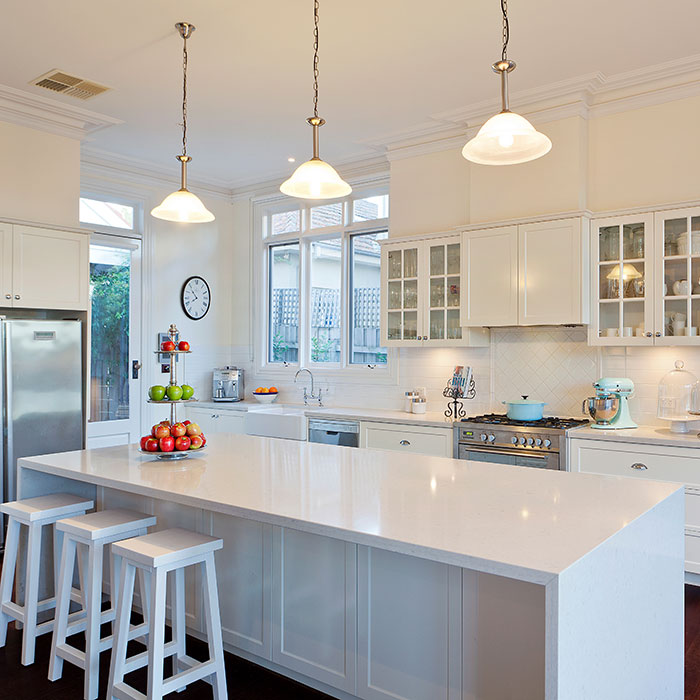
“Where the water feature is in the back yard a problem for my relationship?”
Looking out of her back doors on the side of the house, a large water feature was glaring at Bella (apparently), which might affect her marriage. It was not possible to move it so what else could she do about it?
I didn’t consider this placement to be a concern and surmised Bella would rarely be standing still in that location. On the contrary, I felt the water feature wasn’t ‘glaring’. And it was playing a helpful part in supporting the missing Wealth corner because the WATER element of the feature would feed the WOOD element of the corner. We use these two elements to support each of their corresponding houses.
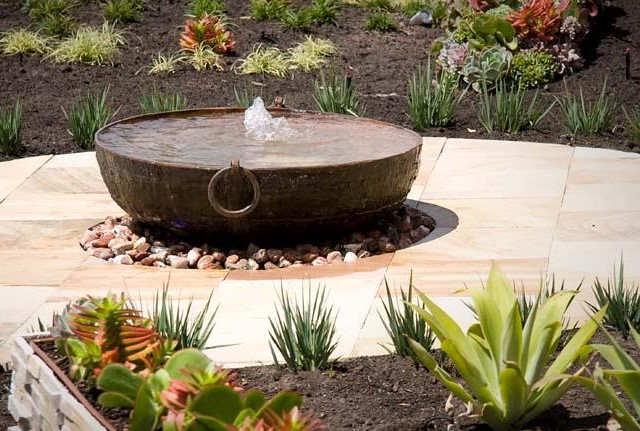
“What is the best position for a religious altar in the house?”
Having studied how they use the rooms and the space available in each, I recommended the religious altar we mover it to the Helpful People corner of the home (in the lounge). This placement would also position the altar to greet them on their re-entry into the home.
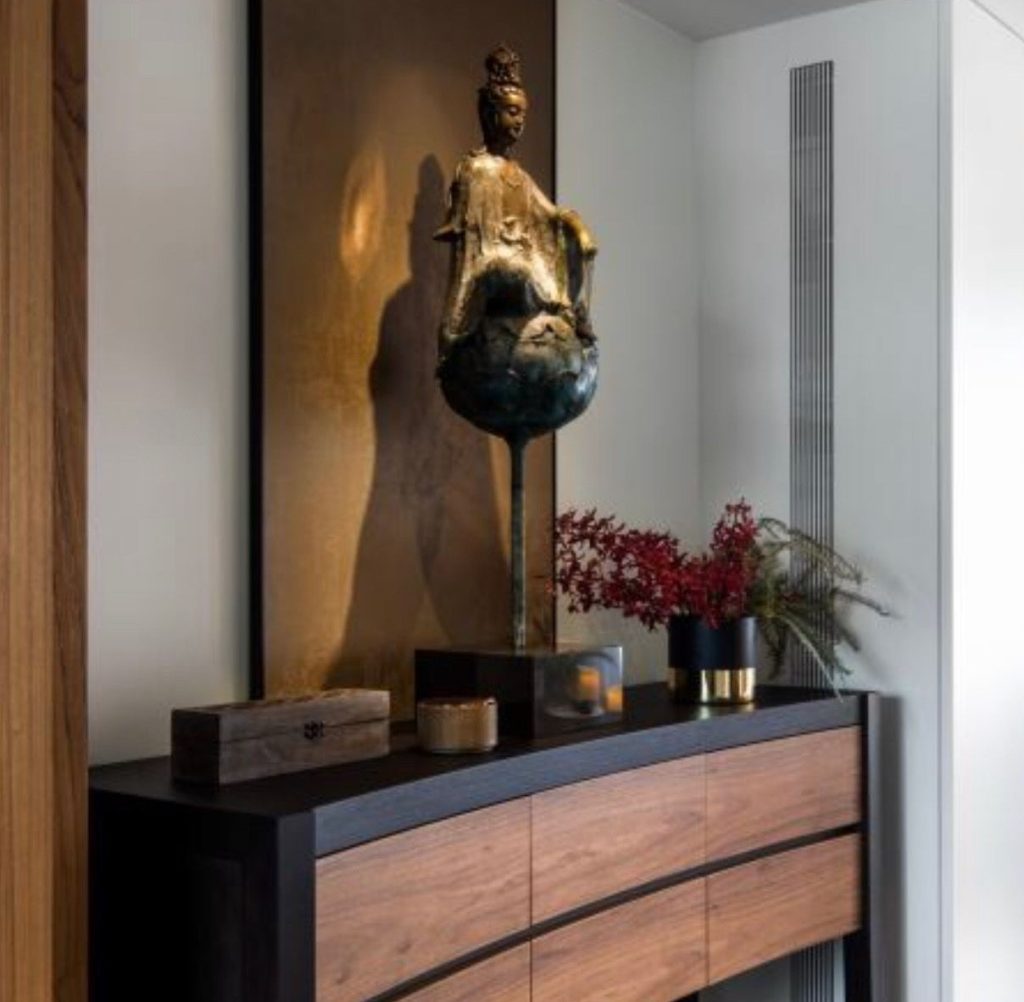
“Where should I place the Foo dogs?”
Decorative Chinese statues made of marble or jade called Foo Dogs are a traditional symbol of prosperity, longevity and protection. I gave Bella a couple of options as to where these could sit and recommended she try both ways to see which felt best to her.
“Where should I hang our large metal chimes?”
Since there was space between them and their neighbours not to be disturbed by the metal chimes, the SE corner of the veranda (exterior Helpful People) was a good placement. Since the chimes were made of metal and this Bagua house corresponds to the METAL element, there was an extra advantage to this.
Is Feng Shui the same as Interior Design?
Hearing some of the suggestions made to Bella, those less familiar with Feng Shui might consider the similarities with Interior Design. So what makes Feng Shui different? The answer lies in Feng Shui’s central premise.
Feng Shui is a well-being practice. It’s raison d’être is to improve the energy of the home and consequently the health and vitality of the people living there. Any improvement to the aesthetics of the place is invariably a bi-product. My role is as a catalyst, helping to transform circumstances. I need to know something about my clients – what stage of their life they are in, what their life aspirations are, and any obstacles they are encountering along the way which are preventing them from shining.
The primary focus of Interior Design is to improve aesthetics. That the inhabitants may notice a corresponding uplift in their well-being and success is beyond the remit. Interior Design is a service in which the expert’s ideas are sought to enhance the visual appearance of the home but kowtows to the welfare of the place and its inhabitants.
Creating an energy blueprint
I also use a proprietary method alongside Feng Shui to create an energy blueprint. It’s called the Intuitive Vision Board. Before or after a Feng Shui consultation, I facilitate clients in creating an intuitive vision board. By using the right side (creative) of the brain, they are able to explore beyond a superficial ‘wish list’ of wants and desires, the direction their life wants to take. This vision board is an energy blueprint. The Feng Shui task is to reflect this in the surroundings so the environment enables the efforts and achievements of the inhabitants and doesn’t inadvertently undermine it.
When you read about Feng Shui you could be forgiven for believing there is only one solution to every scenario and you’re in trouble when you cannot fulfil it. This is not the case. I never arrive for a job ready to apply a set of rules that constitute good Feng Shui. There is invariably a number of ways to rectify a problem and I will always be guided by the individuals and the space as to the best solution. This is where the skills of the Feng Shui practitioner come into their own; knowing which, from the range of options, will work the best. This can only come from years of experience and practice.
PS Please note the photographs are not of the actual property in this instance to protect my client’s privacy.
A Feng Shui practitioner since 1995, I love helping clients create a life they love from a space they love. Trained also as a Reiki Master, I’m an energy worker too. Blending modern day ideas of well-being with traditional wisdom to promote happy, healthy harmonious environments for all.
Mary Nondé
